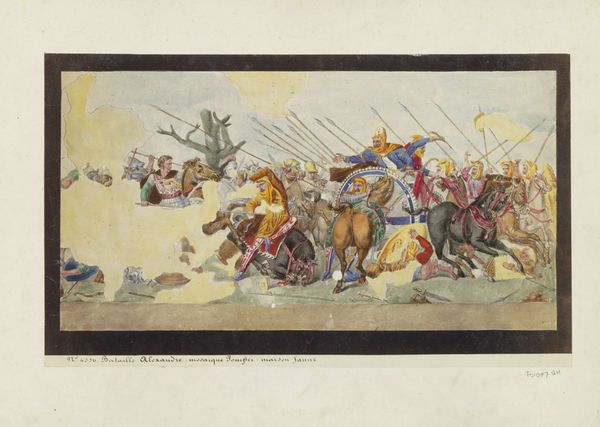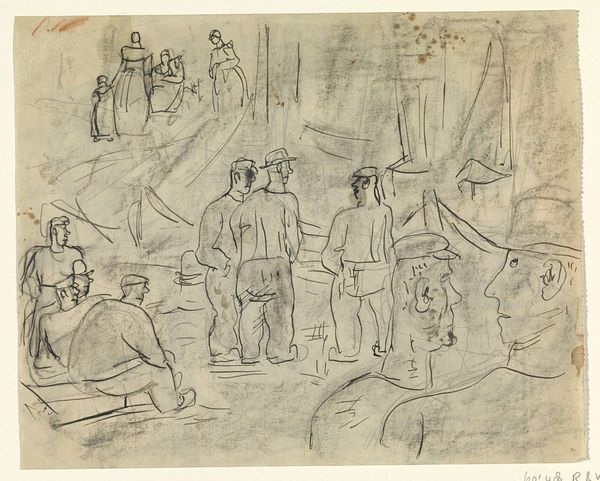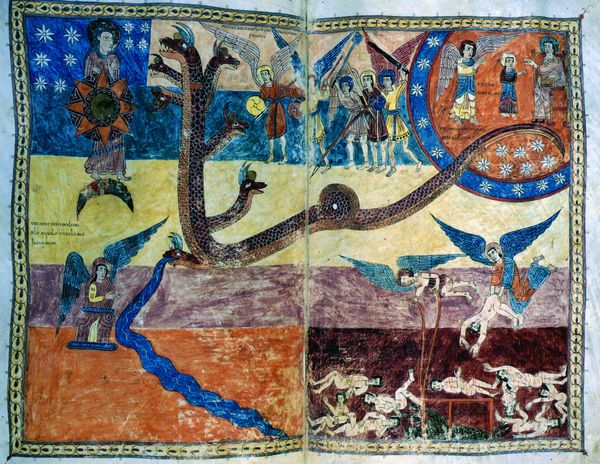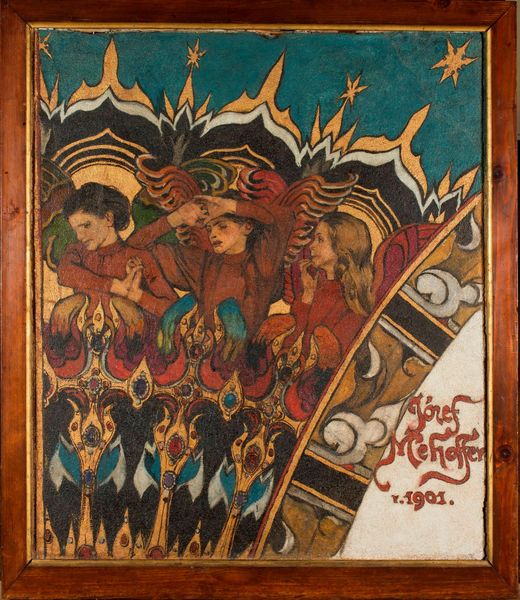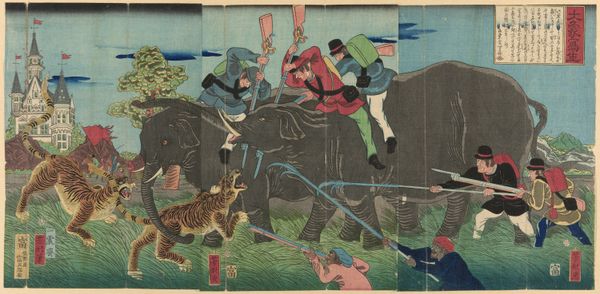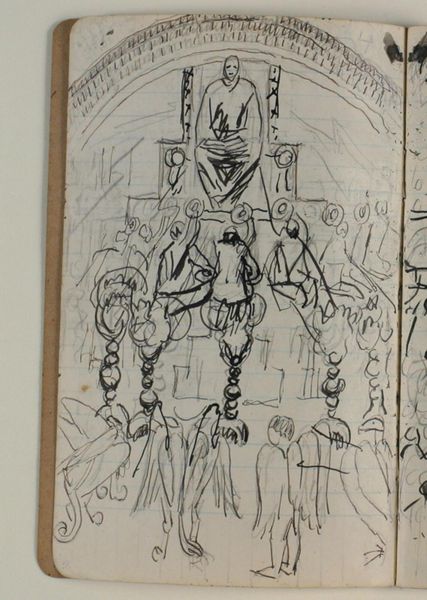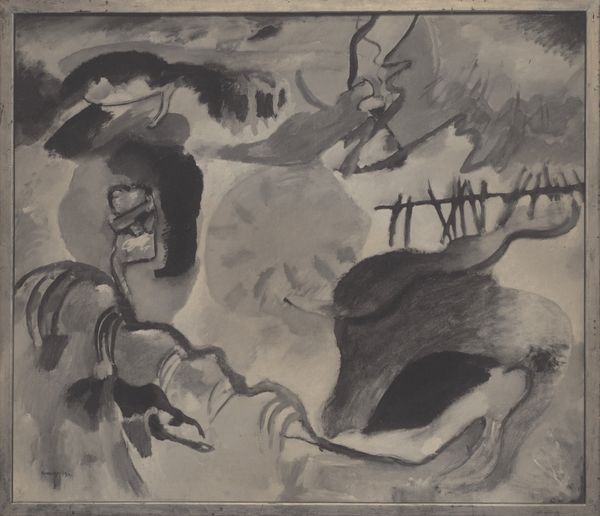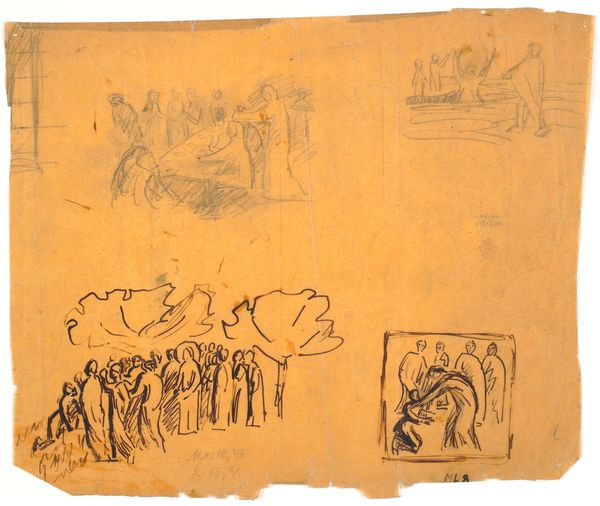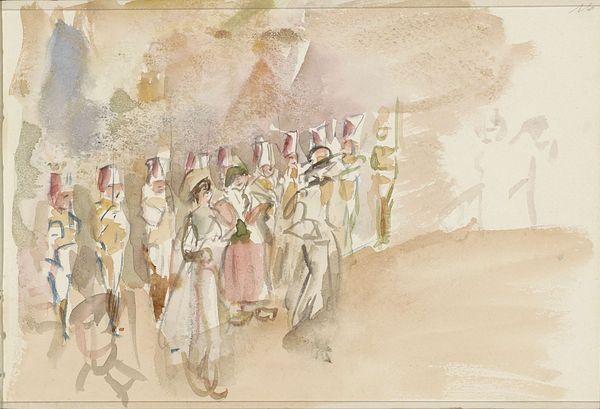
watercolor
#
water colours
#
narrative-art
#
outsider-art
#
fantasy-art
#
figuration
#
watercolor
#
genre-painting
#
watercolor
Copyright: Henry Darger,Fair Use
Curator: So, what's your first reaction to this intriguing piece, "After Osmondonson they are rescued," created with watercolor by Henry Darger? Editor: Rescued, huh? Visually, I'd say "barely escaping chaos." I see swarms of figures—are those children?—against backdrops that teeter between idyllic and downright menacing. The whole thing feels like a dream on the verge of turning into a nightmare. Curator: Darger’s work often evokes such a visceral reaction. As an outsider artist, his works weren't produced within mainstream artistic discourse, allowing for unrestrained expression. His art, particularly the series depicting the Vivian Girls, tackles complex themes of childhood, war, and redemption within a fabricated world. He worked mostly in obscurity and his work only came to public attention after his death in 1973. Editor: Outsider indeed! It certainly marches to its own drum. This use of watercolor… there’s a kind of fragile vulnerability to it, contrasting sharply with the dramatic, almost apocalyptic scenes playing out. Curator: The sheer scale and repetitive nature of Darger’s artistic practice were his attempt to shape, even control, an inner reality marked by trauma and social alienation. Think about the cultural moment: he created this between 1930-1960's, during the Cold War. This work offers us a lens to examine our historical perspectives about trauma. Editor: It’s the kind of piece that gets under your skin, isn't it? Knowing his history now, there is some vulnerability in those light washes of color. I keep wondering what the man who made this saw in the world or, perhaps more accurately, what he needed to imagine instead. Curator: Absolutely. Artworks like these provide us not just an aesthetic experience but also force us to confront complex societal realities around mental health, historical trauma, and individual expression against prevailing social norms. Darger's art asks us to reconsider what and who we value in the artistic sphere. Editor: It's that tension between the beautiful and the terrible, right? It unsettles, provokes questions… That’s a good day for art. I am glad this work survived, though it's clearly lived a life. Thanks for that deeper dive. It really re-colors my reading.
Comments
No comments
Be the first to comment and join the conversation on the ultimate creative platform.

